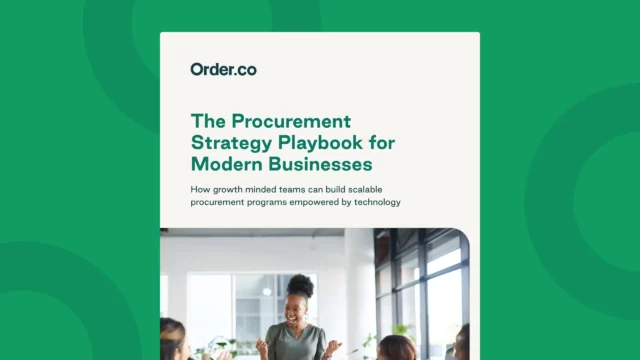What is a Procurement System & How Does it Work?

What is a Procurement System & How Does it Work?
Manual procurement processes are slow, error-prone, and expensive. A good procurement system helps improve visibility, boost efficiency, and reduce costs across the entire source-to-pay lifecycle.
By centralizing all procurement activities and automating key processes, procurement systems support an effective and proactive spend management strategy that aligns with core business objectives.
This guide breaks down what procurement systems are, outlines their benefits and features, and shares best practices for implementing a new system. It also looks ahead to emerging trends shaping the future of procurement.
Download the free guide: The Procurement Strategy Playbook for Modern Businesses
What is a procurement system?
A procurement system is a digital platform that centralizes purchasing, payments, and vendor information and automates manual processes within the procurement lifecycle. It provides greater transparency and efficiency through real-time spend visibility and faster purchasing workflows.
Eprocurement systems help enforce policy and contract compliance through configurable, user-based controls—eliminating maverick spend and reducing the risk of human errors. Most solutions also integrate with a company’s existing accounting software or ERP system to establish seamless sharing of financial data.
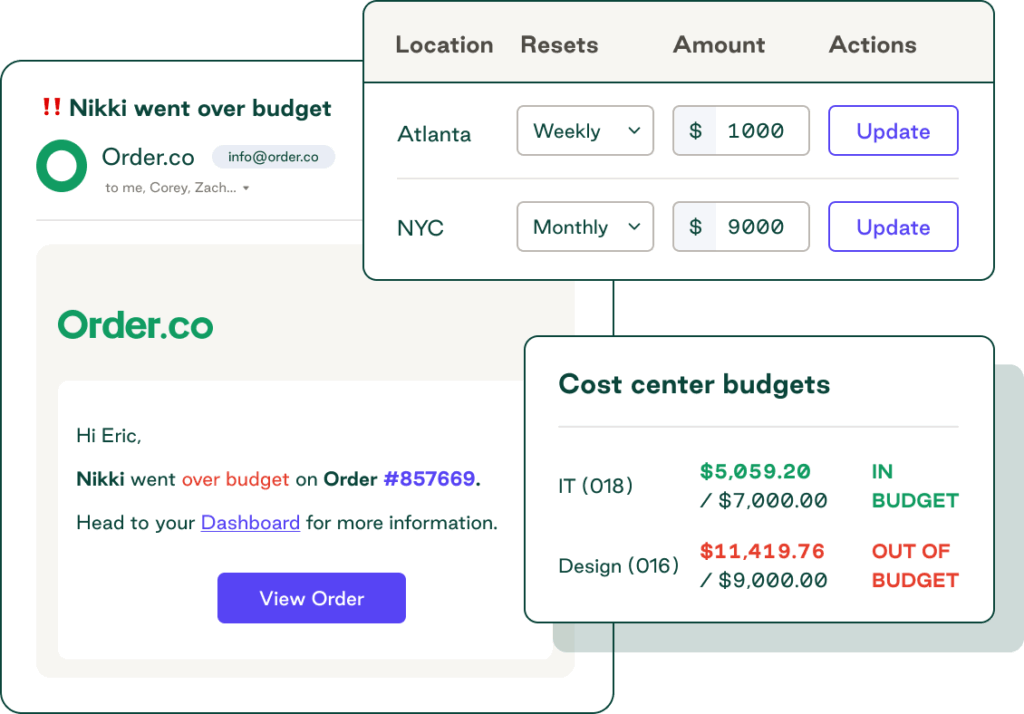
What are the different types of procurement systems?
Procurement systems differ in capabilities, setup, and accessibility. They fall into three main categories, each designed to serve specific organizational needs and preferences.
The main types of procurement systems include:
- Cloud-based procurement software: Also known as software-as-a-service (SaaS) systems, these solutions provide access from any location with internet connectivity. They’re popular for their fast implementation, automatic updates, and scalable pricing packages.
- On-premise procurement systems: These solutions are installed and run on your company’s servers and infrastructure, providing complete control over their data and configuration. They appeal to businesses with strict security needs or complex integration requirements.
- Hybrid deployment systems: A combination of cloud and on-premise solutions, hybrid systems allow you to keep sensitive data on local servers while benefiting from the scalability and accessibility of cloud capabilities.
Purpose and application vary widely across all of these procurement system types. Each category has dozens of industry- and feature-specific solutions—such as manufacturing procurement software, purchase order management software, and vendor management systems—designed to address organizational needs and workflows.
What are the benefits of procurement systems?
Businesses may seek out modern procurement systems to improve workflow efficiency, meet compliance standards, or optimize costs. But these platforms also help transform purchasing from an operational necessity to a strategic advantage, unlocking spend performance insights and enabling smarter, faster decisions.
Cost savings and spend optimization
Procurement systems can significantly reduce costs, both through process optimization and spend controls. Automated workflows eliminate hours of repetitive daily processes, and strategic spend analysis uncovers vendor consolidation opportunities and improved supplier prices.
After implementing Order.co’s AI-powered procurement platform, I Love Vacations, a luxury vacation rental management firm, saved three days per month on expense tracking and achieved 100% spend visibility with live budget insights.
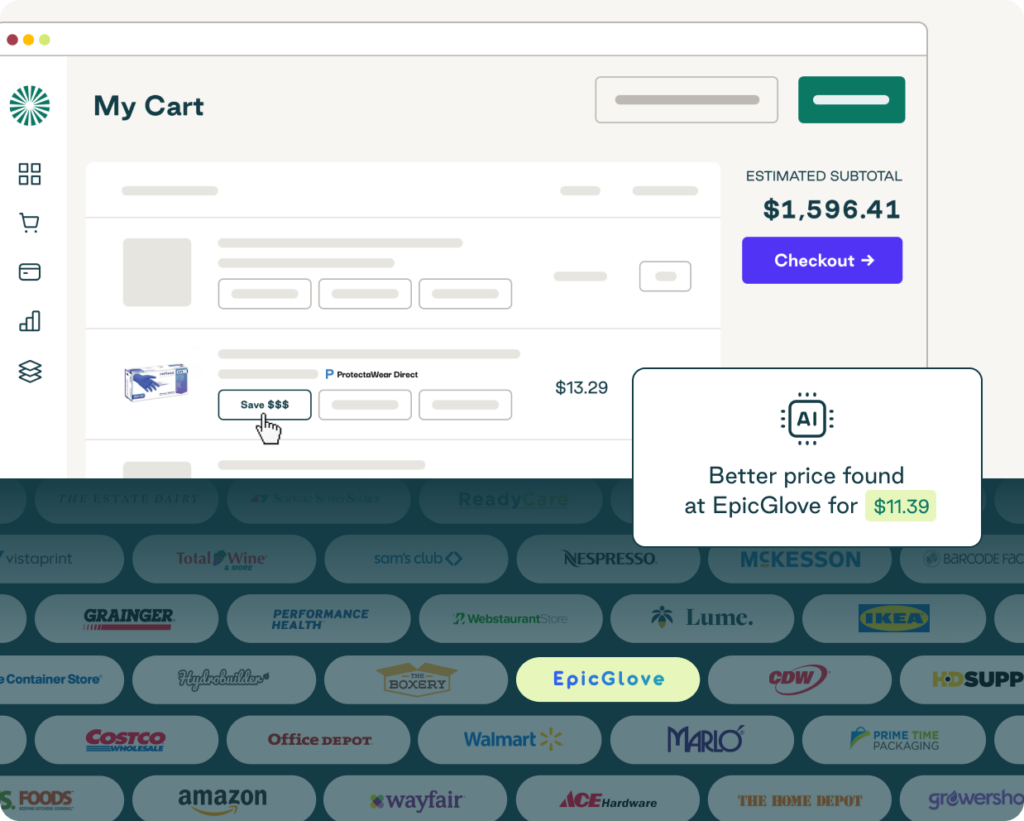
Operational efficiency improvements
By eliminating time-consuming processes like paper-based approvals and manual data entry, procurement systems deliver significant efficiency gains that translate to more time for strategic work. Real-time procurement analytics also help identify inefficiencies and cash leakages early on, allowing you to quickly rectify them.
Risk reduction and compliance improvements
Modern procurement systems are designed to protect your organization from common risks—such as fraud, supply chain disruptions, and cash flow problems—while ensuring you stay compliant with internal and external policies through stricter controls and digital audit trails.
MINISO, a Japanese designer brand, achieved 100% on-catalog spend compliance across 31 locations after implementing Order.co’s intelligent procurement system. Order.co allowed them to replace manual invoice processing and a slow purchasing process with simple, automated workflows that save time and enforce policy adherence.
Data-driven decision-making insights
Reporting and analytics features help transform the role of procurement from administrative to strategic, delivering actionable insights based on spend history, vendor performance, and category management opportunities. Live, configurable dashboards make this data accessible and easy to work with, simplifying the process of generating performance reports and identifying new opportunities.
5 core features and capabilities of procurement systems
While some procurement systems automate your entire purchasing cycle and others target specific processes or activities, the best solutions all include a few essential features. Here are five of the most important procurement system capabilities.
Purchase requisition and approval workflows
Without an automated procurement system, you’re more likely to struggle with maverick spend, policy violations, and slow approvals that cause costly delays.
Modern solutions like Order.co’s AI-powered purchasing software address these challenges with user-friendly interfaces for creating compliant purchase requisitions, automated workflows that route approvals based on pre-defined business rules, custom catalogs of pre-approved products and suppliers, and exception flagging for time-sensitive approvals.
Supplier management and vendor master data
Decentralized vendor management results in a lot of missed opportunities. By consolidating supplier information, performance data, and contract terms into a single source, you can identify duplicate vendors and optimize spend.
The best procurement systems have supplier portals and automated vendor onboarding workflows that let vendors submit required documentation, update their information, and submit proposals. Order.co’s catalog management tools build on these capabilities by leveraging AI to automatically pull data from your purchasing history and create a custom catalog.
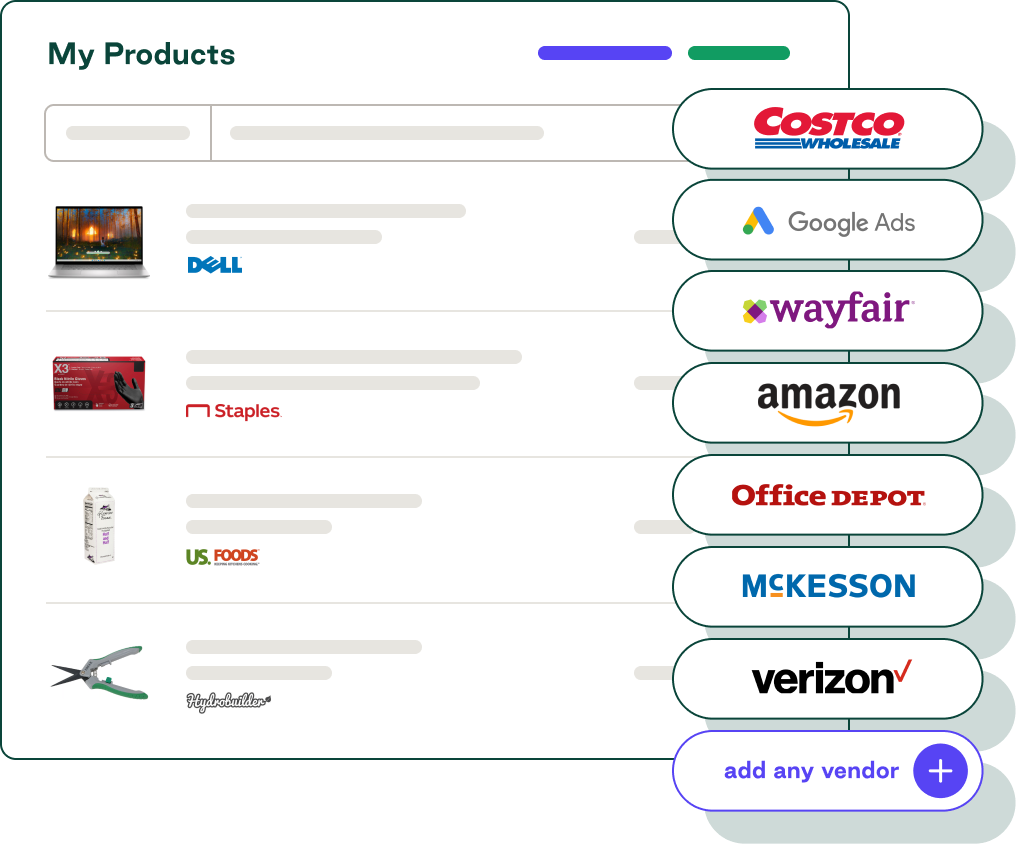
Contract lifecycle management tools
Poorly managed vendor contracts can lead to pricing disputes, legal exposure, and missed renewal or savings opportunities.
Contract management tools in modern procurement systems address these risks by automating contract creation using preapproved templates, enforcing compliance with predefined rules, and monitoring actual spend against negotiated terms to identify maverick spending.
Spend analytics and reporting capabilities
Spend visibility is essential for uncovering opportunities to eliminate bottlenecks and capitalize on cost-saving opportunities. But manual procurement processes make it near-impossible to accurately track and analyze spend performance across all categories and departments.
Digital procurement systems provide clarity and actionable insights with real-time dashboards and reporting capabilities. You can analyze supplier performance and spend history at a granular level, identify opportunities to consolidate or optimize, and forecast future requirements based on historical patterns and external data.
Integration capabilities with accounting and ERP systems
Under a manual process, reconciling invoices with purchase orders and goods receipt notes can take hours—even days. It also heightens the risk of discrepancies, such as duplicate invoices or incorrect details, slipping through the cracks.
Seamless ERP and accounting integrations between your chosen financial system and your procurement software can significantly reduce reconciliation time by eliminating manual data entry, automatically coding expenses, and enabling one-click three-way invoice matching.
What are the best practices for implementing a procurement system?
Effective procurement system implementation is determined by how well you plan, execute, and monitor the process. If you rush implementation or fail to secure stakeholder buy-in early on, you may suffer from user adoption challenges, data issues, and suboptimal system performance.
Here are three of the most critical best practices for successful implementation.
Assess organizational readiness
Early assessment helps you identify potential roadblocks and ensure your procurement system aligns with your business needs.
Begin by evaluating your existing procurement processes, technology, and team capabilities, interviewing stakeholders from different departments to understand the biggest pain points and bottlenecks. Document workflows, approval hierarchies, and integration requirements with existing programs, such as your accounting software or ERP system.
Create an implementation roadmap
Keep system implementation on the right path by building a detailed roadmap that breaks the project down into clear phases and milestones, including:
- Key deliverables
- Deadlines for specific tasks
- Stakeholder responsibilities and ownership
- Resource requirements
- Metrics for success
Start with core functionalities, such as purchase requisitions and approvals, before focusing on the nice-to-have advanced features. Establish project leaders and cross-functional teams to ensure stakeholder buy-in.
Make plans for data migration and system integration
To avoid compromising data integrity, work with your teams to develop a clear strategy for data migration. Map out all the various data sources—including supplier details, historical spend data, and contracts—and create a plan for cleaning, standardizing, and transferring that data to your new system.
Successful implementations hinge on seamless connections with other systems. Test integration points between your procurement system and existing solutions to ensure real-time information sharing between platforms.
Emerging trends shaping procurement systems
The procurement sector is undergoing a major shift. Digital transformation in procurement is no longer just about saving time and reducing costs—companies are now using AI tools and advanced analytics to meet sustainability goals, improve strategic sourcing, and drive more value from their practices.
AI and machine learning in procurement automation
According to a Deloitte survey, 50% of CPOs who have piloted or deployed artificial intelligence in procurement reported doubling their return on investment compared to traditional methods. New AI and machine-learning capabilities enable procurement systems to steer innovation and eliminate common bottlenecks through smarter, more efficient processes.
Order.co’s AI-powered spend management platform exemplifies this shift, reducing invoice processing time by 50x for one organization and saving another $190,000 through strategic AI sourcing. Beyond these efficiency gains, Order.co’s AI can proactively detect and resolve order issues before they impact operations, ensuring smoother workflows and enhanced resilience.
Sustainable and ethical procurement capabilities
Sustainability in procurement is quickly becoming a core priority for global organizations. Consumers are demanding more transparent and ethical supply chains, while new regulations are pushing companies to embed more sustainable practices into procure-to-pay processes.
The recently formed Coalition for Sustainable Procurement (launched in June 2025), led by the UN Global Compact and joined by over 20,000 business participants, is now the world's largest corporate sustainability initiative. The group represents a new era of collaboration between CPOs, policymakers, ministers, and sustainability leaders focused on driving measurable improvements in supply chain sustainability.
Next-generation analytics and predictive insights
The procurement analytics market is expected to grow at a remarkable CAGR of 21.9% by 2030. To support the shift from reactive to proactive procurement, modern procurement systems—such as Order.co’s strategic sourcing software—now use advanced analytics to improve decision-making and uncover predictive insights into spending patterns.
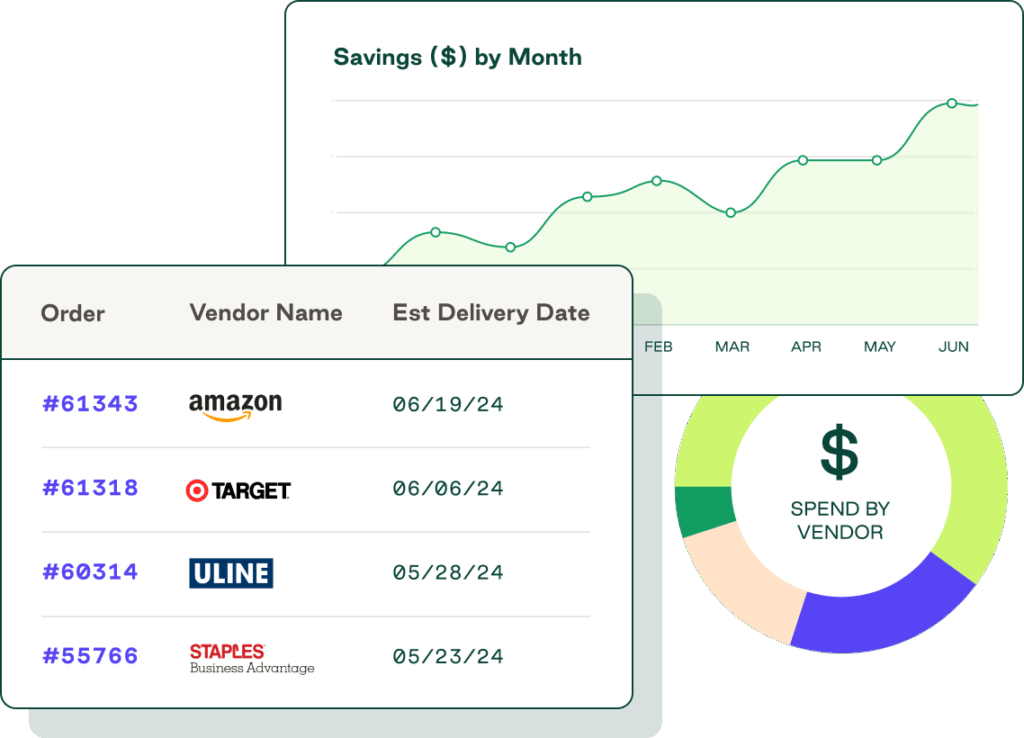
Simplify your purchasing process with Order.co's procurement system
Procurement systems are the way forward for organizations looking to curtail maverick spend, build more efficient processes, and unlock data-driven insights that support strategic sourcing initiatives. Order.co helps you simplify the procurement process while cutting costs and waste from daily practices.
With Order.co’s intuitive procurement management software, you can:
- Save time and money with fast, automated procurement workflows
- Uncover valuable insights through AI-powered spend analytics
- Strengthen vendor relationships with centralized supplier management
- Simplify AP processes with consolidated invoicing and approval controls
Schedule a free demo today to see how Order.co’s procurement system can simplify and automate your organization’s entire purchasing process.
FAQs
How can businesses simplify procurement processes to reduce manual work and errors?
Businesses can simplify procurement by using modern systems that automate routine tasks, centralize purchasing data, and improve spend visibility. This reduces manual work and eliminates errors, boosting efficiency and accuracy across every stage of the process.
How does automating purchasing and approvals help businesses control spending across multiple locations?
Automated purchasing provides real-time visibility into company spending patterns across different locations and departments. Digital approval workflows and configurable spend controls help you maximize procurement efficiency and prevent unauthorized spending.
What are the key benefits of implementing a cloud-based procurement platform for businesses in the US?
Cloud-based procurement platforms help US companies remain competitive and compliant in an increasingly regulated industry. Real-time spend performance insights and budget controls help improve accessibility, allowing businesses to proactively identify, prevent, and react to potential issues.
Get started
Schedule a demo to see how Order.co can simplify buying for your business.
"*" indicates required fields
